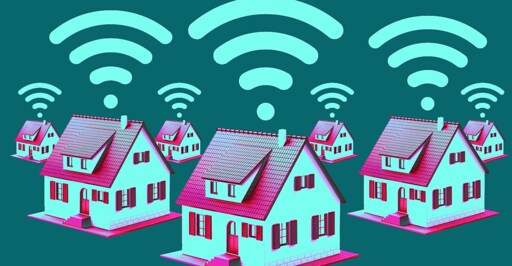They were never building that, let’s be honest.
Edit: rural broadband is like the new affordable housing, high speed rail, or better public transit… It’s something that’s completely possible to do but they’ll always find some excuse to do nothing so they can campaign on it again next cycle
It was basically up to the states this time around, they could allocate BEAD funds more or less as they wanted and absolutely build fiber out to the vast majority of residences (look at North Dakota, it’s evidently possible) through models like municipal fiber.
Ultimately it’s a political issue more than anything else, Americans just can’t get anything done anymore, politicians would rather enrich themselves and voters only care about the culture war.
I wish there was more municipal fiber. It’s absolutely insane that the big ISPs fight it and often win.
Pros of fibre:
- cheaper: much cheaper than copper or satellites.
- faster: latency is faster than copper and wireless (to satellite).
- very high bandwidth: theoretically unlimited. In practice a commercial fibre optic multicore run for domestic use at street/town level will be pushing ~800Gb/a, and this number generally doubles every few years as tech advances. The new spec being finalised is 1.6Pb/s.
- high stability: does not give a crap if it’s cloudy, foggy, or rainy, or if the trees have wet leaves, or if it’s just a very humid day, unlike all forms of outdoor wireless comms. Does not care about lightning strikes, as copper does.
- long life: 25 to 30 years life quoted for most industrial in-ground fibre, but real life span is expected to be much longer based on health checks on deployed cable in countries with large fibre rollouts. Upgradable without replacing the medium throughout that lifecycle.
- lowest power usage: fibre optic uses far less power and energy than 4G 5G and satellite infrastructure.
Cons of nationwide fibre:
- billionaires who launched thousands of satellites make less money.
- monopoly Internet Service Providers won’t be able to fleece their cable internet customers some of the highest charges for net access in the world.
- people will tell you “uhm acktually wireless internet is the speed of light also as it communicates via photons”, but will usually leave out all of the interference it experiences.
There’s nothing better than fibre optic infrastructure for general public Internet connectivity. Wireless/satellite should only be a last resort for remote users.
As someone who wrote their CS thesis on networks I find starlink infuriating. Its such a terrible option that basically persists through memes and highly niche use anecdotes.
You can literally cover entire landmass of earth with fiber and cell towers for pennies on a dollar what low orbit satellites would get you.
Not to mention is objectively better technology which we would have to setup anyways if we want low latency networks and why wouldn’t we want that in the future? There are countless benefits to reduced latency so it’s really unavoidable. Now some want to prioritize worse technology when it’s at peak cost. It’s so fucking stupid.
Ah yes, who needs fiber when you have an inferior product that will be worse in every calculable way?
Pay no attention to the person who stands to benefit from this deal. There’s definitely nothing illegal about it.
So what if the owner of Starlink just happened to spend a quarter of a billion dollars to get the current president elected? That surely has nothing to do with the abysmal Starlink service stealing away funding for critical infrastructure.
Hope you like satellite internet.
Not as much as I revile Musk.
I miss dial up. Like local providers with 2 or 3 numbers to try.




